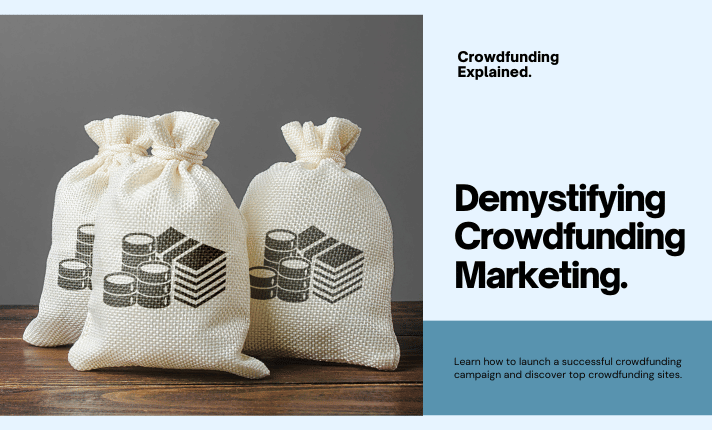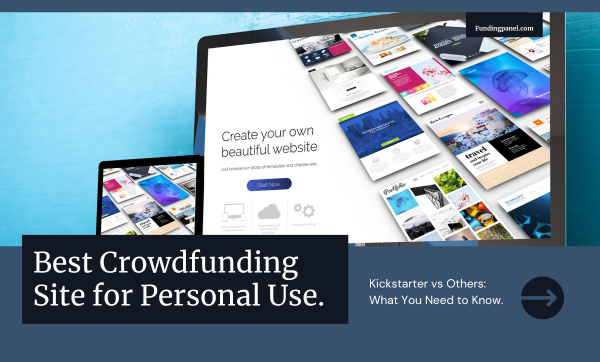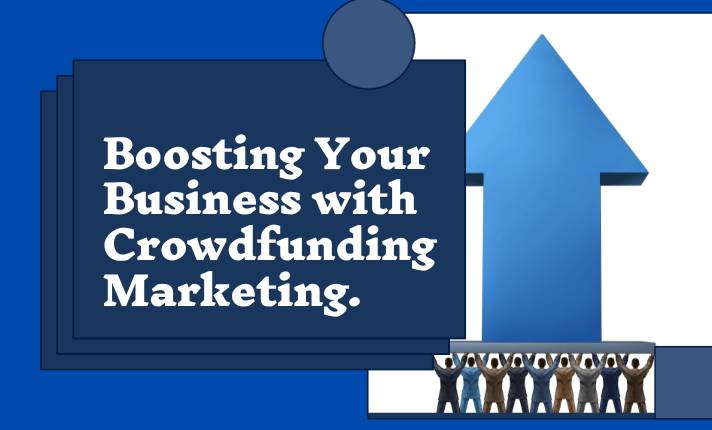Intro
Demystifying Crowdfunding Marketing | The process by which creators and entrepreneurs bring their ideas to life has been transformed by crowdfunding. It has gained popularity as a means of project launch for both individuals and businesses due to its creative fundraising approach. However, what precisely is crowdsourcing marketing? And how does it operate? This concept can be intimidating and perplexing if this is the first time you’ve heard of it. We’re here to demystify crowdfunding platforms such as Kickstarter marketing. In this blog post, we’ll examine crowdfunding, how it operates, and some leading platforms that have helped it become a worldwide phenomenon. Prepare to explore the world of crowdfunding marketing and learn how it can help you realise your dreams, whether you’re a curious person or an aspiring entrepreneur.
What Exactly is Crowdfunding Marketing?
An intelligent tactic called crowdfunding marketing uses the strength of the crowd to generate money for a cause or project. In essence, it’s an online fundraising method where innovators, creators, or business owners showcase their ideas or projects to the public to raise many small funds rather than depend on one major donor. Crowdfunding websites such as Kickstarter frequently facilitate this approach. It’s not enough to ask for money, though. A carefully thought-out marketing strategy is necessary for a crowdfunding campaign to succeed in generating interest in and buzz about the project. It entails crafting an engaging narrative, establishing a precise objective, providing alluring incentives, and interacting with possible backers through emails, updates, and social media. Therefore, it’s more than just a financial tool; it’s also an effective marketing and community-building tool that can assist creators in fostering relationships with their backers, who may become devoted patrons or brand ambassadors.
The Intricate Mechanism of Crowdfunding
When we take off the crowdfunding surface, we uncover a system that is both straightforward and intricate. Three key players are involved in crowdfunding at its core: the person initiating the project, backers, and a platform that serves as a middleman. The person creating the project, who could be an artist or an entrepreneur, proposes a project with a clear objective and timeframe. These specifics are then displayed on the crowdfunding website, like Indiegogo or Kickstarter. Individuals who align with the project, known as backers, contribute financially to achieve the objective. These promises come in various sizes, from modest sums given by many supporters to more considerable sums from a select group of backers. Backers frequently receive incentives or benefits commensurate with their pledge level, and the process is democratised. Everything about the process is open and honest. Real-time tracking of fundraising efforts is available to backers, and money is usually only disbursed when the target is reached by the deadline. On the other hand, some platforms use a “flexible funding” model, meaning that creators get paid regardless of whether the goal is met. Whatever the model, crowdsourcing is a complex mutual benefit and co-creation mechanism.
The Inherent Advantages of Crowdfunding
Crowdfunding is appealing to innovators and creators because it offers many benefits. One obvious advantage is its capacity to generate capital in a comparatively short time. Conventional funding approaches frequently involve a drawn-out process of applying for loans or looking for venture capitalists. This timeframe is significantly shortened by crowdfunding, which allows money to be raised in days or weeks. Crowdfunding also acts as a tool for market validation. A campaign’s success or failure can reveal necessary information about the level of demand for a good or service. This can assist business owners in modifying their products to better appeal to their target market. In addition, crowdfunding platforms offer an interactive platform where creators and backers can interact, creating a two-way communication channel that increases the transparency of the project. Finally, the reward system allows backers to participate in a project’s journey and provide financial support, strengthening the sense of community and brand loyalty. Crowdfunding is a compelling option for anyone looking to bring an innovative idea to life because of its many benefits.
The Challenges Associated with Crowdfunding
Crowdfunding has numerous advantages, but it also has drawbacks. The fierce competition is one of the main obstacles. On well-known platforms, thousands of projects are fighting for attention; to stand out, one needs an idea for a compelling project, an engaging campaign, and marketing tactics that work. One other difficulty is that some crowdfunding models are all-or-nothing. The pledged funds are returned to the backers, and the project receives nothing if the funding target is not reached within the allotted time. This can put tremendous pressure on artists to meet and surpass their objectives. There may be drawbacks to crowdfunding’s public aspect. A project’s reputation or that of its creator may need help to gain momentum or achieve its objectives because such failures are made public. Finally, handling the expectations and correspondence with many backers can take a lot of work, especially for those unfamiliar with crowdfunding. It takes meticulous preparation, a thorough comprehension of the crowdfunding procedure, and a steadfast commitment to interact with the crowdfunding community to overcome these obstacles.
Popular Crowdfunding Websites To Consider
There are a few names in the crowdfunding space that are always recognisable. Among the most well-known is Kickstarter, famous for supporting artistic endeavours ranging from ground-breaking artwork to cutting-edge tech products. Another industry leader in crowdfunding, Indiegogo prides itself on being flexible and enabling both fixed and adjustable funding. On the other hand, GoFundMe is frequently used for private causes, such as financing for schooling or unexpected medical expenses. Specifically designed for writers, artists, and podcasters, Patreon distinguishes itself by providing creators with a subscription-based platform that allows them to receive ongoing funding from fans or patronsPlatforms for equity crowdfunding, such as SeedInvest and Crowdcube, are perfect for business owners seeking capital in exchange for stock. The type of project you’re working on, your financial objectives, and the kind of community you want to interact with will all influence your platform choice. The choice of platform is a crucial component of your crowdfunding strategy because each has distinct advantages and a target audience.
How To Make The Most Out Of Your Crowdfunding Campaign
A combination of intelligent planning, tactical execution, and ongoing involvement is needed to maximise the success of your crowdsourcing campaign. Start with a clear goal and a gripping narrative that appeals to your target audience. Your project description should be lucid, relatable, and motivating to arouse feelings and instil a sense of urgency. Make the most of social media’s reach-boosting capabilities, and feel free to work with partners or influencers to increase your visibility. As openness fosters trust, regularly keep your backers informed about your progress and obstacles. Ensure the rewards are reasonable and relevant to your project to encourage contributions. To create a community around your project, interact with your backers via messages, comments, and live sessions. Finally, realise that connecting with people and getting recognition is as crucial to successful crowdfunding as raising money. To ensure the long-term sustainability of your project, put time and effort into your campaign, as its success can serve as a strong foundation.











